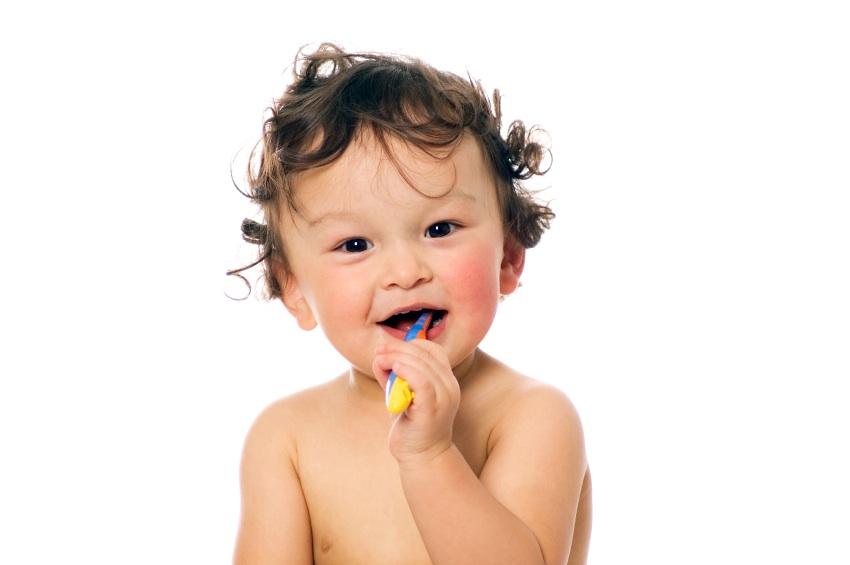 Tooth decay can creep up fast, taking parents by surprise. And more children in this country are getting fillings, root canals and extractions than ever before.
Tooth decay can creep up fast, taking parents by surprise. And more children in this country are getting fillings, root canals and extractions than ever before.
According to the U.S. surgeon general, tooth decay now tops the list of common childhood diseases. One group in particular — children 2 to 5 years old — have had a dramatic increase in the frequency of decay, according to a report released last year by the Centers for Disease Control and Prevention.
“As soon as a baby gets his first tooth, the decay process can start,” says Joel Berg, D.D.S., professor and chair at the Department of Pediatric Dentistry at the University of Washington. He recommends parents get into a routine of brushing their baby’s teeth in the morning and at bedtime with a soft infant toothbrush as soon as teeth start to come in.
Berg says his biggest concern for a child younger than 5 is early childhood caries (also know as baby-bottle tooth decay). That’s when the tooth enamel is damaged by long-term exposure to almost any type of liquid except water. The sugars from these liquids — including cow’s milk, breast milk, formula and fruit juice — cling to the teeth. Then bacteria feed on the sugars and produce acid that attacks the tooth enamel. Usually saliva naturally cleanses the bacteria after 20 to 30 minutes following a meal, but when babies and young children constantly suck on bottles and sippy cups, their teeth can have almost constant exposure to sugars, resulting in more cavities.
“Parents need to learn about the frequency of sugar consumption. It’s not the type of sugar that’s bad, but how often throughout a day a kid eats it. Small amounts of sugar spread out over the course of a day are more likely to cause problems than if it’s just given at mealtimes,” Berg explains.
How to promote dental health
Parents can provide a balanced diet by including cheese, vegetables, yogurt and milk at mealtimes to build strong teeth, while offering water to be sipped throughout the day. Avoid giving kids sticky or gooey candies, fruit leathers and long-lasting hard candy that can stick in the grooves of the teeth for hours.
With good home hygiene and regular checkups at the dentist, tooth decay can be prevented. The American Academy of Pediatric Dentistry (AAPD) recommends babies have their first dental visit before age 1. Regular visits can protect kids’ teeth with treatments like fluoride and sealants, as well as provide access to X-rays, which Berg says are valuable for detecting disease in the bone and between teeth — places a dentist can’t see with just a visual exam.
Dental-office fluoride treatments reapplied every six months offer strong protection, making tooth enamel more resistant to acid, but daily exposure to fluoride is the best way to prevent cavities.
“Children should start using toothpaste containing fluoride after age 2, but nothing has been proven more effective than water fluoridation,” Berg explains. “Children who grow up in a fluoridated community drinking only fluoridated water will have up to a 60 percent reduction in cavities than those who grow up without fluoridated water.” If your water supply lacks fluoride, a dentist can prescribe a supplement available in chewable pills or drops.
Your dentist can also provide sealants, which, according to the AAPD, cut the risk of school-age children developing cavities in half. The teeth most at risk for cavities are the 6- and 12-year molars, so the AAPD recommends sealants be applied when these teeth first come in.
What’s the best advice for oral care at home? Start the routine early. When your child reaches the age when she wants to start brushing her own teeth, let her take over the job, but continue to supervise to make sure she’s brushing properly at least twice a day, and help her floss daily.
The AAPD recommends brushing for one minute for the top teeth, then one minute for the bottom. To make it fun, sing a favorite song to show your child how long she should brush, or try a toothbrush like FireFly, which has an LCD light that flashes for the recommended brushing time.
Keeping your child’s teeth healthy is a daily task, but the payoff is a brilliant smile — especially if it keeps kids away from the dentist’s drill.
Katie Amodei is a Lynnwood-based freelance reporter, mother and stepmother who often writes about health issues.









